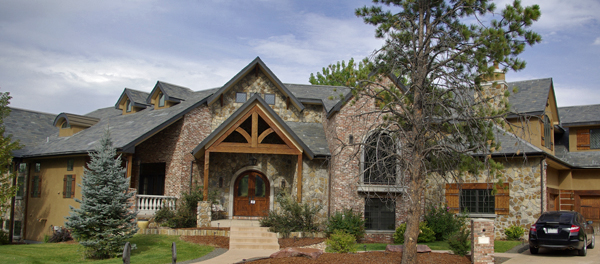
Imagine the knock-down, drag-out arguments. Owners of this house clearly couldn’t agree. One demanded a traditional brick city home, the other a rustic cabin. In despair, their architect negotiated a mashup to satisfy both parties. Why else would formal brick and precast be mixed with rustic stone, timber, stucco and even log construction?
Unfortunately, a “Disneyland approach” when choosing siding and roofing is common. Today anything goes. Independent traditions are sliced, diced and mixed haphazardly. Material properties no longer considered. Finishes are applied like paint colors, without regard for any underlying meaning or purpose.
Yet, the resulting homes reek of fakeness. They appear arbitrary, lacking a genuine story. Failing to connect on a deeper emotional or physical level, these homes highlight a lack of understanding about what humans really need from the built environment. An ignorance leading to suburbs full of unhealthy places to live.
Are fake looking homes really unhealthy? Studies show that lying or telling falsehoods like the Trump administration, increases emotional stress and decreases physical health. Other studies suggest life meaning is more important than physical comfort.
In contrast, old homes feel genuine and truly comfortable. Why? Traditional designs, follow a loose set of rules that respect holistic human needs. Material choices were once based on basic physics and biology, which combine to inform human nature. Below is a synopsis of healthy traditional design strategies for choosing exterior finishes with meaning and purpose.
☑ Purpose is Paramount
When considering exterior materials always keep shelter and practical concerns in mind. Think long-term. Will your decisions stand the test of time and weather? Don’t make choices sure to keep you awake in a rain storm. Instead cultivate a deep feeling of protection and permanence.
In this consumer oriented society, exterior materials have become interchangeable products subject to the latest fads. Stained plywood siding is the latest rage? Who cares if it rots quickly. You’ll probably move before then anyway.
Old timers built for generations however. They never forgot the underlying purpose of exterior materials is shelter. Durable, dense and thus hard to work materials were considered valuable because they better resisted the elements. Lasting for generations with little maintenance, stone was more desirable than brick. But brick was better than flimsy wood siding.
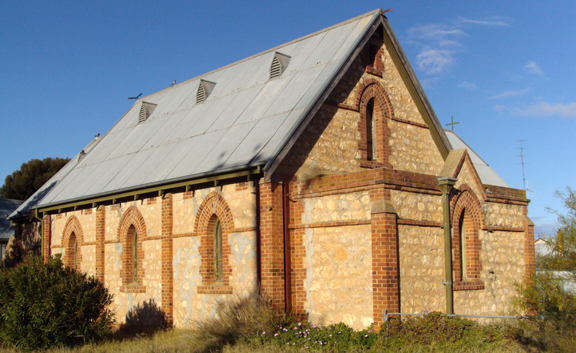
Materials were often mixed when warranted, even brick with stone. Yet, these materials weren’t juxtaposed arbitrarily (like in the featured image above). Instead brick was placed around openings or at corners. Because builders found it easier to create arches, square openings and corners with rectangular brick. Brick is made by firing clay in a kiln, so was usually purchased. While the main wall could be infilled with locally scavenged field stone if precision wasn’t necessary.
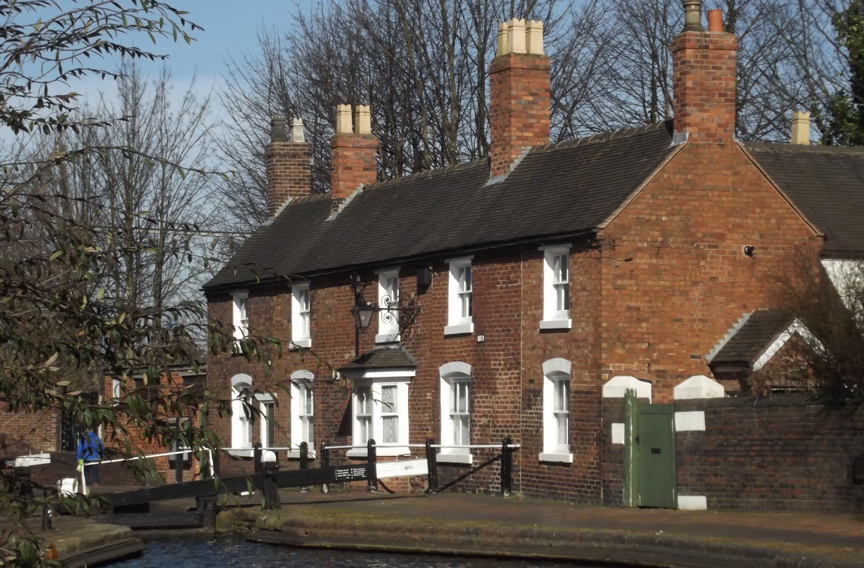
Brick buildings often have stone lintels, sills and wall caps. Stone is more structural and protects brick from water. For the same reasons, sometimes stone was used for a bridge’s or building’s base.
|
|
|
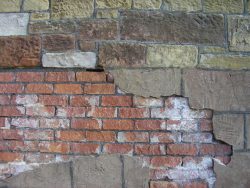
By the way, stucco was originally used to seal brick from the rain, making brick perform more like stone. Stucco also covered wattle and daub, an early form of wood framing infilled between heavy timbers. Either way, stucco was sometimes scored to look like more desirable stone to enhance a building’s value.
This same traditional hierarchy works for roofing. Slate (real stone) was considered better than terra-cotta. But terra-cotta was better than wood shingles. Asphalt is a recent product.
☑ Reinforce The Design
Humans seek meaning in everything. Exterior finishes should reinforce your home’s story. By extension, your material choices add meaning to your own life.
Perhaps the classic American example of exterior details reinforcing the design is the common Craftsman Bungalow. From the brackets and corbels holding up the simple sloped roof. To the masonry wainscot base protecting the structure from precipitation. Everything about the bungalow exudes no-nonsense shelter and protection. Learning from the bungalow, think of exterior materials as part of an integrated design including your homes plan, form and details.
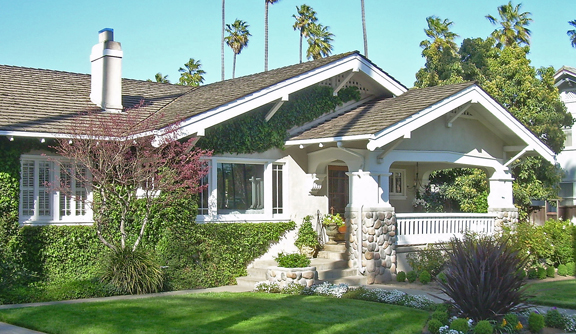
☑ Stay True to Nature
We implicitly expect materials to perform in certain physical ways. These underlying assumptions contribute to our views of proportion and scale, even for faux finishes. Well detailed materials greatly add to a feeling of security and safety.
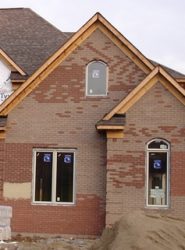
When today’s wood framed homes imitate masonry construction, design mistakes are common. Designers often place brick veneer without any visible means of support. Intuitively, people feel something is wrong. Even if they don’t know exactly what. Practically speaking, brick can’t support itself over openings without a detailed arch or structural lintel. Nor is the brick below an opening safe from water intrusion without a solid sill. This attention to detail reinforces real meaning and purpose for a house and can’t be ignored.
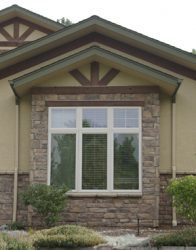
Even when lintels are placed over openings, they’re often undersized for the purpose. The lintel over the opening at right simply isn’t convincing for supporting the loads above. A wood lintel needs to be at least 8″ to 12″ thick and appear as solid timber to be visually supportive. By the way, the fake timber truss in the gable above also suffers from the wrong scale. Also notice no top member for the lower gable, where as the upper gable at least has top members. Other problems exist with the detailing of this home. The windows aren’t recessed into the stone, revealing it’s only “thin” veneer. And there’s not enough stone above the opening to look like the wall is actually made of stone.
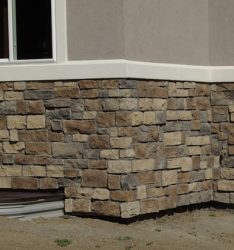
Because thin stone doesn’t require a foundation, it usually doesn’t rest on anything making the stone float in the air with no visible means of support. And making the home look fragile. Because real stone is heavy and substantial, even fake stone needs to visibly rest on a solid foundation. Thin stone can be detailed to rest on a 2″ foundation ledge above grade, with the appropriate weep screed. But designers rarely detail homes that way. Perhaps the gap will be less noticeable after landscaping. This image also shows a stucco covered foam cap for the stone. Although this detail is popular for low-cost. No flashing was applied. Which means any moisture traveling down the wall might get behind the stucco and behind the thin veneer stone. Continuously flash all horizontal changes in materials prevents water from entering the wall system.
☑ Reflect Location
Humans are territorial, we can’t help emotionally and physically connecting with places. Our identities are intertwined with birth city or adopted home. Exterior materials can reflect the building’s location, providing a deeper connection for us.
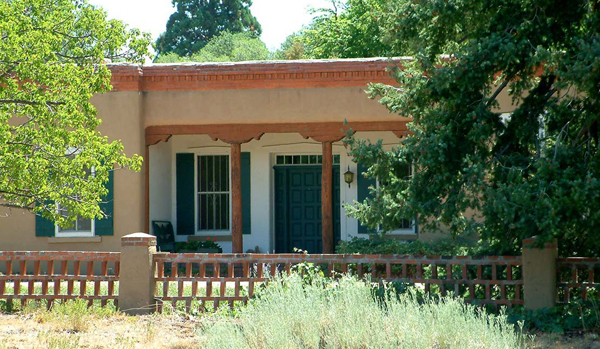
With the modern building industry most homes today are made with synthetic finishes shipped thousand of miles. Edgy, urban colors are chosen without any regard for local or historical conditions. While these trends are good for business, they don’t respect eons of evolution. We humans need connection with our locations through the built environment. On the other hand, some places like Santa Fe, New Mexico, relish in their location. Zoning ordinance in the area even require homes fit the historic desert culture. But this approach can be used for any climate and history.
☑ Color Matters
Unlike most animals, color is a fundamental part of the human condition. For us color is full of information. Choose otherwise acceptable materials that clash or look dull and the whole home suffers.
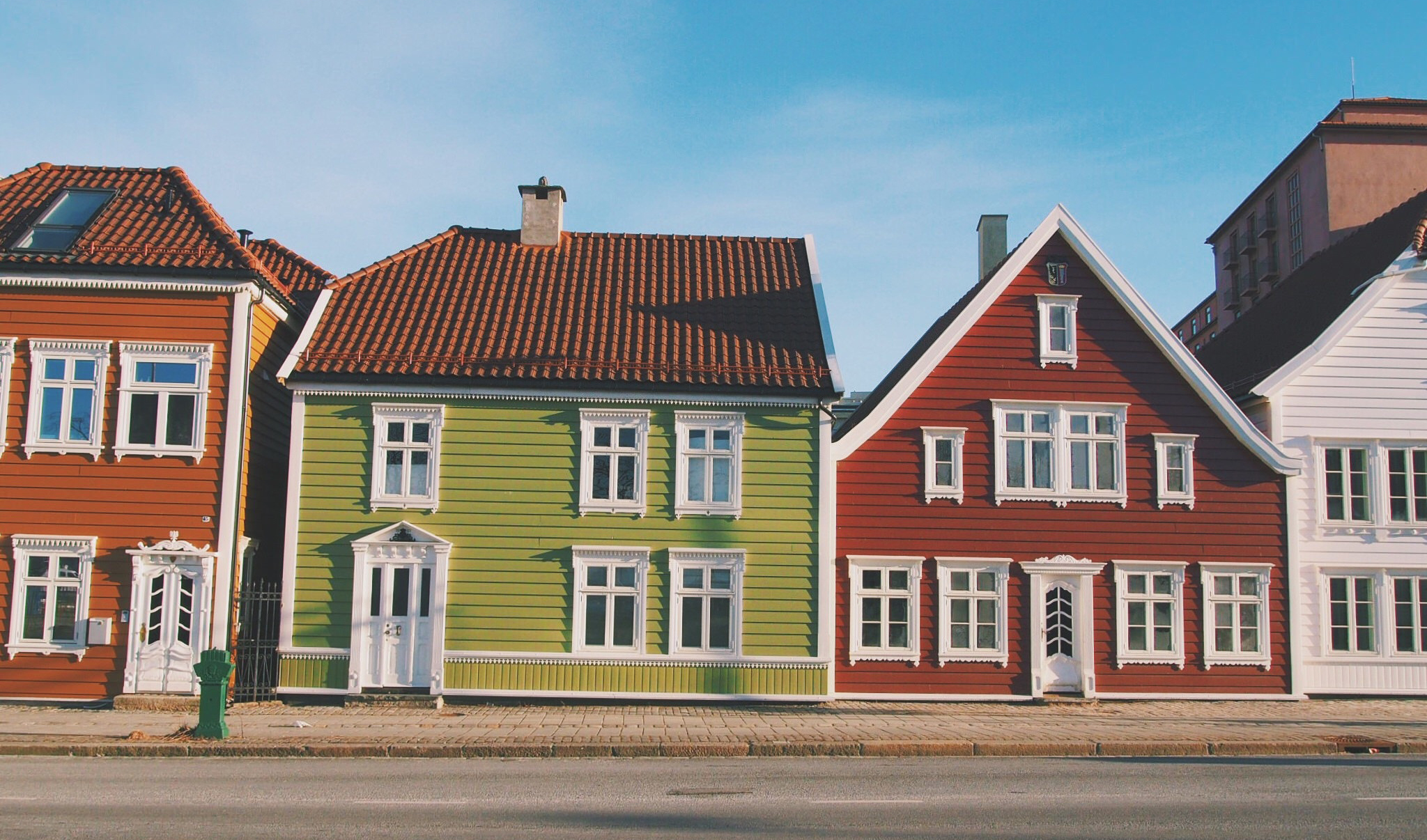
Not only can color be used to connect with a location (see “Reflect Location” above). The right colors combined are synergistic. They play off each other, creating a pleasing composition. Most of us know what we like, but aren’t trained to work with color. So consider hiring a color consultant. Many now work online for a reasonable fee. I’ve had clients use The Color People with great success. Just send images of your home and location. Explain your goals and wait for the right answer.
Photo Credits:
The Disneyland Approach by Todd Remington
Brick Arches by Denisbin, Flickr
Stone Lintels by Elliott Brown, Flickr
Brick & Stone Bridge by Tim Green, Flickr
Brick Cap by Krosseel, Morgue File
Scored Stucco by Doctor Bob, Morgue File
Classic American Bungalow by David Sawyer, Flickr
No Visible Means of Support by W. Marsh, Wikipedia
Thin Lintel by Todd Remington
Floating Thin Stone Veneer by Todd Remington
Territorial Adobe by Carptrash, Wikipedia
Colorful Scandinavian Homes by Stocksnap
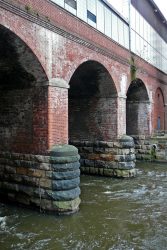
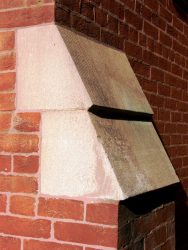
It’s interesting to read about some of the different exterior finish options such as stone or brick. I want to redo some of the outsides of my house and I think a brick veneer could look really nice. I don’t necessarily need to lay real bricks and I think the veneer provides a very attractive result.